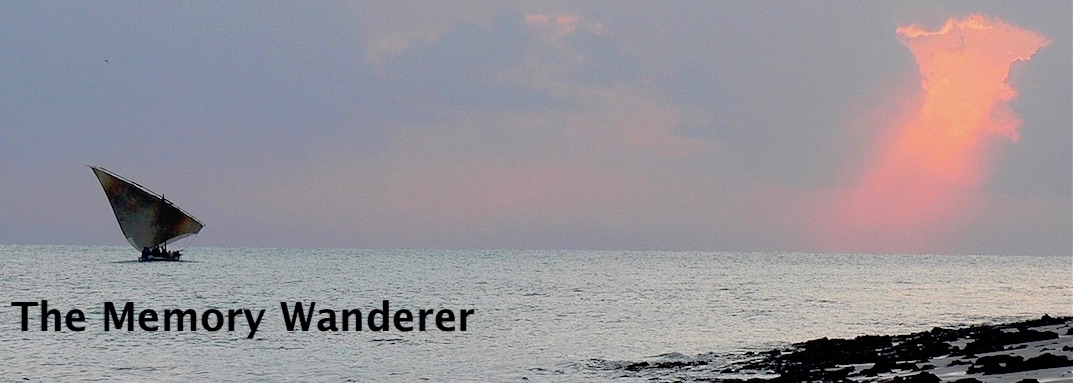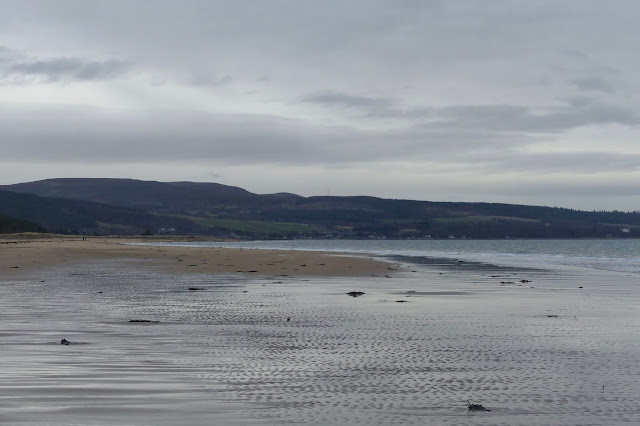 We walked along the beach below Dunrobin Castle again today, in part because there's a strong northwesterly blowing which is bringing in sharp showers and this beach is relatively protected. Below the thicket where we watched the blackcaps on Saturday we....
We walked along the beach below Dunrobin Castle again today, in part because there's a strong northwesterly blowing which is bringing in sharp showers and this beach is relatively protected. Below the thicket where we watched the blackcaps on Saturday we....
Monday, November 30, 2020
Turnstones
Saturday, November 28, 2020
Blackcaps
 It's been another beautiful day today, hardly a cloud in the sky nor a breath of wind, so we took a gentle walk along the shore....
It's been another beautiful day today, hardly a cloud in the sky nor a breath of wind, so we took a gentle walk along the shore....
Friday, November 27, 2020
Calm Waters

Calm waters across Loch Fleet yesterday with a mass of widgeon feeding, the calm....
Thursday, November 26, 2020
Happy Birthday, Dad!
I don't mind remembering you later in the various pubs in England where we had a pint or two together. This was probably your favourite pub, the Cinq Ports in Old Town Hastings, sitting next to your great friend Gordon Faulkner. You were able to relax in a good pub. It was a place where you were happy. However, I have the feeling that the retirement you had so looked forward to when working all those years along the east coast of Africa wasn't what you had dreamed of.
This is how I least want to remember you, in the last few years of your life when you were living in Fambridge Road, near us in Maldon. In some ways it was good, in that our family saw more of you than we had ever done before - for example, I used to pop along for a beer on Friday evenings after school - and the three children we then had came to know you better. But you didn't have many friends in Maldon and, although the bar staff in your local, the Blue Boar, were very good to you, it wasn't a wonderful pub.
Wednesday, November 25, 2020
Sun
 A hard frost and clear skies greeted us when we woke this morning so we were off along the beach to enjoy the sun's warmth and to see what wildlife was moving along the Golspie end, not that we were quite expecting our first encounter which was with....
A hard frost and clear skies greeted us when we woke this morning so we were off along the beach to enjoy the sun's warmth and to see what wildlife was moving along the Golspie end, not that we were quite expecting our first encounter which was with....
The beach was, as usual, deserted of humanity except for one lady walking her border collie. I keep saying it - how fortunate we are to have a beach almost to ourselves.
Tuesday, November 24, 2020
Deserted Sands
We are so very lucky to have a four kilometre long beach almost entirely to ourselves mostly, it seems to me, because the majority of Golspie's many dog owners don't seem to bother themselves with taking their precious pooches for a good run along open sands, something which, in my perhaps limited experience, dogs adore.
Even the wildlife along the beach seem sparse. Oystercatchers predominated along the tide line, accompanied by the occasional curlew - how do they fly with that beak? - but when we left the beach near Littleferry and turned inland........we were met by a pair of stonechats which had staked out an extensive territory of rough grassland to keep them in insects and seeds through the winter.
On our way back to the car along the links we climbed the highest of the many mounds that are scattered across this area. I am not sure how they formed, whether by the action of the sea or by our human ancestors creating them, perhaps as tumuli to cover a burial - stone tools and other artefacts have been found in the area.Monday, November 23, 2020
An Old Wall
These trees, seen yesterday as we followed the path through Balblair Wood which skirts the north side of Loch Fleet, have an unusual, linear root arrangement.
The trees have grown on top of an old stone wall - visible at left in the picture - much of which may have been earth which the roots exploited. At some stage the wall was eroded, possibly by an incursion of the sea at a point where the wall - visible as a straight black line on....
.... this ....this 1874 OS map - passes close to the loch. It may be that the wall was originally built as a flood defence.It seems to me that the map suggests the wall is older than the plantation as the trees extend across it. The plantation dates back to the time when the clachan of Balblair, to which the track leads if followed eastwards, was cleared, after which the land was probably deemed to be too poor for 'modern' agriculture so it was put down to trees.
It still leaves the question of why the trees chose to grow on top of the wall, reaching out to each other as if they are holding hands.
Sunday, November 22, 2020
A Dreich Loch Fleet
 Anyone who dreams of living in the Scottish Highlands needs a regular reminder that a fair proportion of days look like this, grey, wet, windy, cold, miserable - the Scots word dreich describes them perfectly - except....
Anyone who dreams of living in the Scottish Highlands needs a regular reminder that a fair proportion of days look like this, grey, wet, windy, cold, miserable - the Scots word dreich describes them perfectly - except....
We walked along the loch side for an hour or so, the wind and rain blowing into our faces. Stopping for a few moments at our furthest point and looking up the loch towards the Mound it seemed as if the sky might clear but the few minutes of watery sunshine were merely a brief reminder of how this place can, occasionally, be: the rain returned.
Friday, November 20, 2020
Fungal News
Thursday, November 19, 2020
An Aggressive Sea
 It was every bit as cold last night as the forecast had predicted, with a low of 1C, but the snow didn't materialise so we set out, as soon as the sun was warm, for the first walk along Golspie beach for some days, the tide having only just come round to giving us low water in the morning.
It was every bit as cold last night as the forecast had predicted, with a low of 1C, but the snow didn't materialise so we set out, as soon as the sun was warm, for the first walk along Golspie beach for some days, the tide having only just come round to giving us low water in the morning.
Only three other people were on the beach, hurrying, as we were, to get along it before the tide came in and cut us off from the few access points. The only other life....
....was a small flight of oystercatchers; nor was there anything washed up along the tide marks to interest us, other than a couple of gull-chewed crab carapaces.I like the way the sea comes in each day, twice a day, and cleans the beach, erasing the memories of those that passed along it, re-setting it for newcomers, but the sea along Golspie beach does seem a wee bit aggressive at the moment, continually reaching up to the back of the beach to remove great swathes of sand and........expose more and more of the bank which separates the beach from the links, exposing the roots of the marram grass that binds it. Very likely the beach will be brought back but if it isn't, and we have easterly gales this winter, it does seem probable that the sea will break through, as it has done in the past.We walked for about an hour and then sat on one of the boulders brought here to strengthen the beach defensives, enjoying the bright sun and the warmth and watching........the waves come in, each rising as the bottom shallowed, rising and rising and hesitating before curling over to collapse in an explosion of foam. Over the years we've done this on so many beaches, yet the pleasure never fades.











































